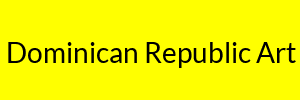Dominican Republic Art
The Dominican Republic art did not develop a national style until 1865 after independence was declared. Following independence declaration, all the basic nineteenth century European trends rapidly started to blend with Dominican subjects of popular mythology, religion, African heritage, and folktales to create a national style of art.
The first huge display of Dominican Republic art work was in 1890 in Santo Domingo, at the Salon Artistico. The exhibit was consisted of portraits, landscapes, and copies of renowned European works. The first Dominican painter to surface was Domingo Echavarría, who was also recognized as a caricaturist and printmaker.
Dominican Republic art on Realism and Neo-Impressionism style of art became dominant between the 1920’s and 1940’s. Yoryi Morel, Jaime Colsón, and Celeste Woss y Gil, were the three artists of significance who came forward during this period. The drawings, watercolors, and paintings of Morel had a pictorial style that utilized the vibrant colors of the Dominican scenery and his work has become a symbol. Gil on the other hand, introduced the Modernist treatment of the nude to Dominican Republic art of painting. She took attention from critics at home and abroad when she made the first paintings of nude black and mulatto Dominican women.
During the period of the corrupt and authoritarian despotism of Rafael Trujillo from 1930 to 1961, had a dramatic and permanent effect on the history of Dominican Republic art. Eager to fabricate a positive public image in the countenance of increasingly horrific crimes against his own people, the Trujillo government offered substantial artistic support in the forties, founding the National School of Fine Arts and the National Biennial in the year 1942. Additionally, Trujillo provided asylum to Spanish Civil War refugees including famous artists which gave young Dominican artists access to a more international outlook.
In 1961 when Trujillo was assassinated, marked the beginning of numerous years of social and political turbulence that ended in the Civil war of 1965. The long-lasting distressed social and political setting has inspired present-day artists such as Tony Capellán and Belkis Rameríz to develop into social commentators, exposing problems such as child prostitution, boat people who cross the unsafe Mona Passage, and migration.
Central American Painting and Domingo Biennial of Caribbean was inaugurated in 1992, to provide closer artistic contact within the area. Modern Dominican Republic art has come to symbolize the style in Caribbean art as a whole to find common ground, crosscurrent, which prevails over national differences.
Dominican artists have some of the most fine arts that cannot be found just in tourist galleries, some of the artists works are not reproduced in mass to be sold to the general public. They represent true Dominican artists in all senses, unique and contemporary.
Find More Artists Articles
